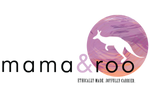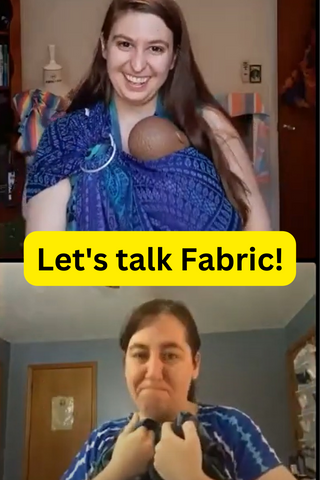Love looking at wraps, but have no idea why some colors are more expensive than other? What difference does a weave make? Is one fabric better than another for xyz [newborns, toddlers, etc]?
We'll answer these questions and more!
See different fabrics in "real life" and learn about the weaving process in this video. Details below.
A common question in our customer service chat is, but why are some colors more expensive than others? Is there really much of a difference?
The answer is, yes--and let's talk about why!
First, just to clear the air--
At Mama & Roo's, we only carry certified safe, high quality, ethically made baby wraps and carriers.
Even our least expensive items on clearance still exceed these standards. If your budget only allows for our basic line, you're still choosing a safe, comfortable carrier for your baby.
Now that that's out of the way =).
What's the difference? Isn't a wrap a wrap? Or a carrier a carrier?
So glad you asked!
Woven wraps are made from actual woven fibers. They can be machine woven or hand woven, but all are made on a loom of some kind. When the fibers are woven in this way, it provides extra strength and support. Well made woven wraps can be used from newborn to toddlers.
Although all our weaves are tested and certified for safety, not all weaves are the same.
Let's imagine the loom again. Some weaves, like our broken twill weaves, are made with fewer threads. These weaves look the same on both sides of the wrap because there are fewer layers to fabric. These weaves are simpler--the loom may only thread a few layers of fiber together to make the fabric. Although these wraps are thinner, they are also more slick and less supportive. They are smooth with less grip because they don't have additional texture in the fabric. Because they are thinner, some parents find them less comfortable for heavier children. There isn't as much fabric to absorb and distribute this weight with the thinner weave.
Compare this to the process of a more complex weave, like our jacquard weave patterns. (Jurassic Park - New Era or Peacock's Tail - Fantasy are great examples.) On a jacquard weave pattern's loom, there can be many layers of fibers. The way the loom is set up and modified is more complex. Instead of over-under-over-under, the fibers may be pulled in diagonals or other directions. To create complicated designs, patterns guide the weaver. The loom may need multiple uses over the area or other advanced set-ups. Artists design the weave patterns and colors to achieve specific characteristics. This may be the look of the wrap, its weight, feel, texture, and more. More fibers are used to make more complicated weaves.
Many of our Jacquard weaves also use richer dyes for more saturated colors. When these weaves make a pattern through a base color (weft), the "wrong" side is often equally beautiful. In reversible styles like a long woven wrap, this is almost like having 2 carriers in one! Simply choose which side you'd like to face outward when tying. More complex weaves can have more texture, but some are woven to be especially airy, glidey, and smooth.
Most broken twill weaves feel and wrap the same. But jacquard and other complex weaves are unique to the design of the wrap itself. Each design is a work of art from idea to completion. Trying different wraps is a wonderful exercise in artistic expression. Learning how to wrap with each wrap's unique qualities is an adventure!
Weave isn't the only differentiator, though.
For example, our Girasol hand woven wraps require more time and attention to weave than our machine woven options.
Our Didymos brand wraps are certified organic. This brand is also known for being thin even with complex weaves. This provides the benefits of complex weaves while maintaining thinner weights.
Type of fiber is another major differentiator. We offer premium fiber options like linen and bamboo. Linen is an incredible fabric made from flax (often hand harvested!). It's durable, cool to the touch, moisture-absorbing and moisture-wicking. Plus, it's a dream to wrap with! Our blends offer unique properties that make using the carrier a unique experience.
We've been talking about wraps, but what about our more structured carriers?
At Mama & Roo's, all our carriers are wrap conversion carriers. This means that they all start as woven wraps, then are cut and hand-sewn into the desired carrier. This provides the benefits of woven wraps, like breathability, comfort, and moldability. In contrast, other brands use heavy and uncomfortable canvas or plastic fabrics. The artistry in our carriers make our carriers beautiful, high quality and durable.
But what now? How do you choose?
We recommend starting by choosing the best style for your needs. You can learn more about how to do that in this article.
Then, choose a fabric you love the look of--you won't use it if you choose something that isn't love!
Not sure how to choose? Message us!
We're always happy to chat one-on-one about your specific needs and help you find the perfect carrier.
Fall in love with something not in stock? Want more options to customize? Join our VIP Club here for access to order exactly what you want with our special order portal.
If it's in your budget, a more complex weave like our jacquard weaves will always be a solid choice. You'll get the most benefits and use out of a higher quality fabric choice.
What would you add about fabric quality?

